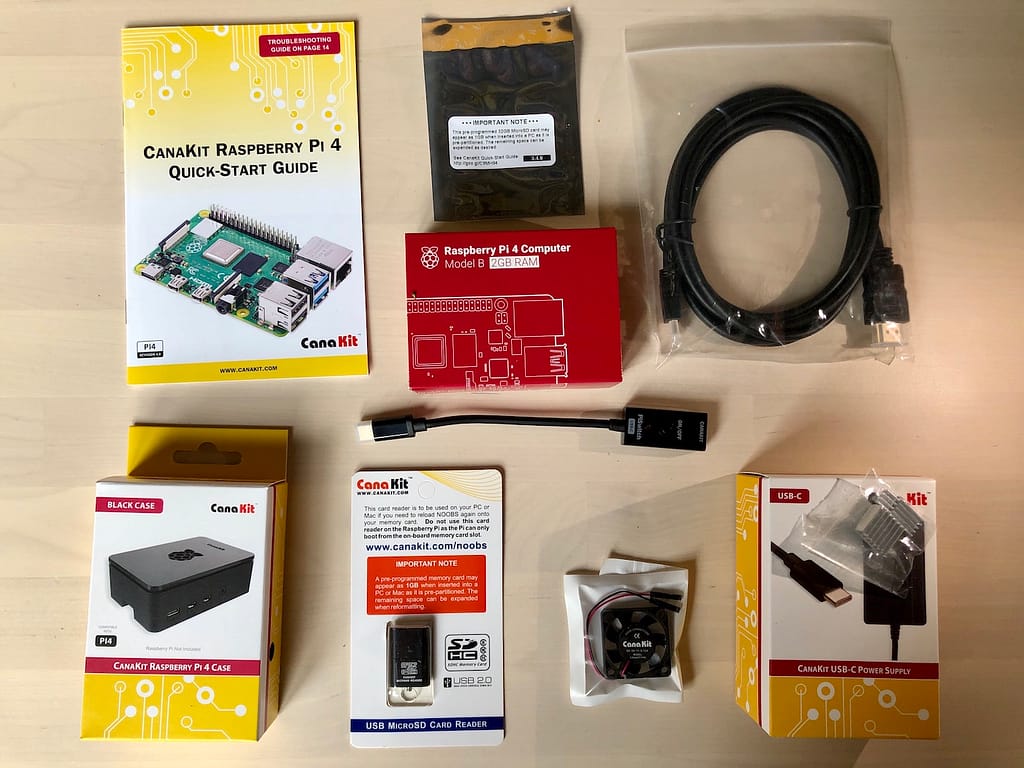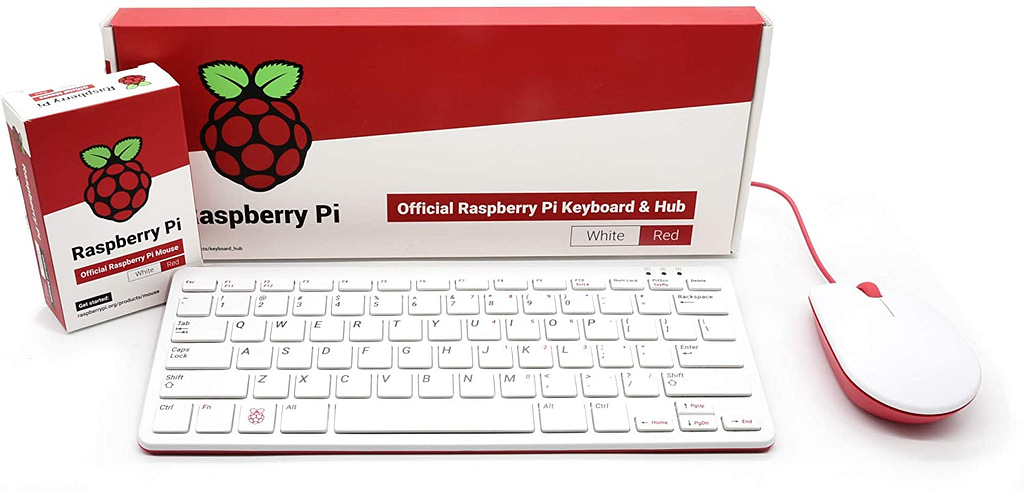*Ahem*
Welcome to the world of Raspberry Pi!
I’m glad you’ve decided to start your journey here as I’ve got plenty of tips and ideas to help you get the most out of your new micro-computer.
The Raspberry Pi is easy to get up and running, but there are a few “gotchas” along the way, and some parts are easy to forget.
In this guide, you’ll learn how to setup your Raspberry Pi, from unboxing to a functioning setup you can use every day for your projects.
Let’s get started with the required items.
If you’re reading this, I’m assuming you already have a Pi in your possession, but if not, give the Raspberry Pi Buyer’s Guide a quick read first.
Getting Started with the Raspberry Pi
You probably have most if not all of these items already, but here’s an exhaustive list of everything you need:
- Monitor
- USB mouse
- USB keyboard
- SD card adapter
- Micro HDMI to HDMI cable
- Power supply
- SD card
- Case
If you get a Raspberry Pi starter kit, it will include all of the list items I’ve marked with bold above (plus a Raspberry Pi 4). It also includes a pre-formatted SD card, so you won’t need the SD card adapter.

If you didn’t get a starter kit, you can get all these items separately for cheap on Amazon:
- Micro HDMI to HDMI
- Power supply
- SD card
- SD card adapter
The total cost for all these items is about $40.
If you don’t have a USB keyword and mouse, you can go all-in with the official keyboard and mouse package for the Raspberry Pi, but any keyboard and mouse will work.

Lastly, it’s a good idea to get a case for your Pi to keep it protected, and I’ve got a list of my favorite Raspberry Pi 4 cases here.
Once you’ve got all these items, the first step is to format the SD card.
Format the SD card
The Raspberry Pi doesn’t have any data storage of its own, which is why it needs an SD card. Furthermore, since it doesn’t have any storage, that means it doesn’t come with an OS installed, and that’s why you need to format an SD card first (format = install OS).
You can follow this short guide to learn how to format the microSD card:
How to Format an SD Card for the Raspberry Pi
With the new Raspberry Pi Imager, it’s very easy and only takes about 10 minutes.
Insert the microSD card
Now that you have the SD card ready, it’s time to insert it into the Pi.
Make sure your Pi is off and not plugged into a power source when you do this. You might also want to place your Pi into its case first since most cases can damage the SD card if it is inserted already.
The microSD card slot on the Raspberry Pi 4 is located on the underside of the Pi, opposite the USB ports. The contact pins should face the Pi, so the graphic on the card is visible.

Once you’ve inserted your formatted SD card, you’re ready to connect all the peripherals.
Connect the peripherals
Before you connect the power source, you need to connect all the peripherals. The Pi may not recognize them if they’re not plugged in at boot, and adding the power supply will turn it on immediately.
The Pi has two micro HDMI ports: HDMI 0 and HDMI 1. You need to plug the HDMI cable into HDMI 0, as pictured here:

Then you can plug in the keyboard, mouse, and USB-C power supply.

Lastly, plug the power supply into an outlet, and the Pi will boot up right away. You should see a red light and a blinking green light.

More importantly, the display should show up on your monitor. It can take a minute, so don’t worry if the screen stays blank for a few moments.
With the Pi turned on and the display visible on-screen, you’re prepared to configure the OS.
Configure Raspberry Pi OS
Once your Pi’s interface shows up on your monitor, you’ll find yourself looking at the Raspberry Pi OS desktop.
While this might be your first new OS in many years, you’ll find it familiar and comfortable whether you’ve been using a Mac or PC. The most recognizable features are included, such as folders, programs, and a navigation bar along the top.
This prompt will appear right away asking you to setup the OS.

Click the Next button, and you’ll see these options to configure your location, language, and timezone.

Once you’ve selected your location and language preferences, the next step is to set your password.

I’d recommend making your password short and memorable for now since you will likely need to type it a lot when first setting things up. Your password is akin to the password you set on your laptop so it isn’t that important for security unless you are worried about someone physically stealing your Pi or if you plan to allow connections from remote networks.
Also, everyone forgets this while setting up their Pi: your username is “pi.” It’s easy to forget because you didn’t explicitly set it, but every time you need to login, you will use the username “pi” and the password you set.
Next up, the Pi is going to ask you if there are black borders around the edge of the monitor.

If there are, check the box, and the Pi will update the resolution for your monitor the next time you restart it.
After this, you’ll be asked to choose a Wifi network to connect to.

Once you’ve connected to a network, the Pi will check for software updates. Click “Next” to begin the update process.

It will take a few minutes for the Pi to download and install the available updates, and then the setup is complete!

Click the “Restart” button so the Pi can apply your configuration settings, and you’re finished getting started with your Raspberry Pi.
Use your Pi from your laptop
If you want to use your Raspberry Pi like an ordinary computer on your desk, then you’re all set!
But if you’d rather operate the Pi from your laptop or existing desktop PC, there are two simple techniques you need to learn:
How to Connect to Your Raspberry Pi From Your Laptop Using a Remote Desktop
How to SSH Into Your Raspberry Pi in Under 3 Minutes
Follow both those tutorials, and you’ll learn how to operate your Pi remotely with a visual desktop and with the command line.
Thanks for reading this step-by-step guide on how to setup your Raspberry Pi. If you have any questions, please post them below. And if you liked this article, share it with someone else!

Be First to Comment